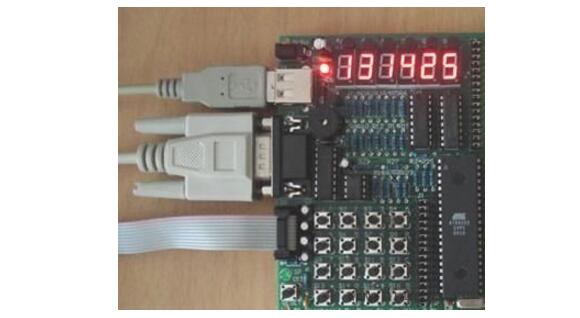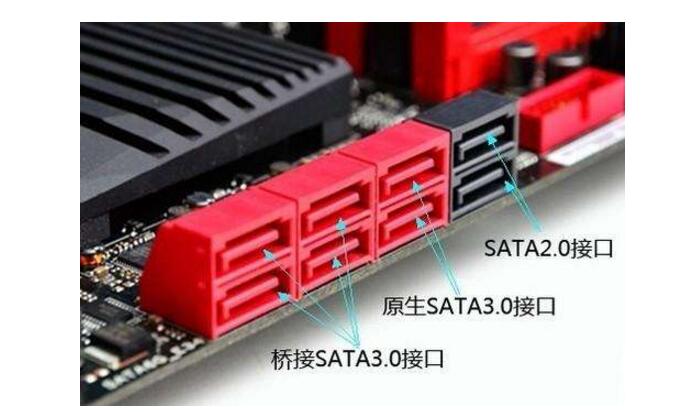The connection between the microcomputer host and the external device basically uses two types of interfaces; the serial interface and the parallel interface. The parallel interface means that each bit of data is transmitted at the same time. Its characteristic is that the transmission speed is fast, but when the transmission distance is long and the number of bits is large, the communication line is complicated and the cost is increased. Serial communication refers to the sequential transmission of data in one bit, which is characterized by simple communication lines, as long as a pair of transmission lines can achieve two-way communication, and can use telephone lines, thereby greatly reducing the cost, especially suitable for long-distance communication, but The transmission speed is slow. Serial communication itself is divided into asynchronous communication and synchronous communication. Digital signals are transmitted on the serial communication line. The indicator of the ability to transmit digital signals is Data Rate. The unit is Bps (Bit Persecond), which is the number of bits transmitted per second. Serial Interface Standards: One serial interface standard that is commonly used today is the RS-232-C standard. The RS-232-C interface standard uses a 25-pin connector (D-type socket). RS-232-C provides 25 connections.
The parallel interface adopts the parallel transmission mode. The interface for data transmission between the microcomputer and the external device is called the parallel interface. It has two main features: first, the parallel transfer binary date is the data width; the second is the computer and peripherals. Responsive communication signals are used to coordinate the data transfer operations between the two parties. This contact signal is also called a handshake signal.
Simple parallel interfaceThe simple parallel interface consists of 0-line handshake parallel interface, 1-line handshake parallel interface and 2-wire handshake parallel interface.
1, 0 line handshake parallel interface The so-called 0-line handshake (contact), the interface circuit does not contain the coordination of data transmission contact signal, which is the simplest form of parallel interface, it is divided into input parallel interface and output parallel interface and Input/output bidirectional parallel interface 3 forms. The zero-line handshake input interface can be directly read by the three-state gate when the input amount is relatively stable (the input status information does not change within a period of time, such as a digital input). 0-line handshaking output interface When the output digital does not need to be latched, a three-state gate can be used for direct output. 0 line bidirectional input/output interface When the peripheral device and the CPU need to use the data bus to transmit information in both directions, the I/O device can send information and receive information.
2. 1-Wire Handshake Parallel Interface The 1-wire handshaking parallel interface is based on the 0-wire handshaking parallel interface and adds a handshake signal line. The 1-wire handshake always assumes that the data sent by the sender is ready and the receiver can receive it.
Programmable parallel interfaceThere are many types of programmable parallel interface chips. Intel's 8255A (PPI), Motorola's MC6820 (PIA) and Zilog's Z80-PIO all fall into this category.
Serial interface standard
Synchronous Serial Interface (English: SynchronousSerialInterface, SSI) is a commonly used industrial communication interface.
Asynchronous serial refers to UART (Universal Asynchronous Receiver/Transmitter), Universal Asynchronous Receiver/Transmitter. The UART is a parallel input chip that is serially output and is usually integrated on the motherboard. UART contains TTL level serial port and RS232 level serial port. TTL level is 3.3V, and RS232 is negative logic level, it defines +5~+12V as low level, and -12~-5V is high level, MDS2710, MDS SD4, EL805, etc. are RS232 interface, EL806 has TTL interface.
The serial interface includes RS-232-C, RS-422, and RS485 according to electrical standards and protocols. The RS-232-C, RS-422, and RS-485 standards only specify the electrical characteristics of the interface and do not involve connectors, cables, or protocols.

The serial interface, abbreviated as serial port, namely COM interface, is an expansion interface using a serial communication protocol. The appearance of the serial port is around 1980, the data transmission rate is 115kbps-230kbps, the serial port is generally used to connect the mouse and external Modem and old-fashioned camera and tablet and other devices, some new motherboards have begun to cancel the interface.
The parallel interface, referred to as parallel port, or LPT interface, is an extended interface using parallel communication protocols. The data transfer rate of the parallel port is 8 times faster than that of the serial port, and the data transfer rate of the standard parallel port is 1Mbps. It is generally used to connect printers, scanners, etc. So the parallel port is also called the print port.
In addition, both the serial port and the parallel port can be interconnected through a direct cable connection. In this mode, data can only be transmitted at a low speed. The connection between the microcomputer host and the external device basically uses two types of interfaces; the serial interface and the parallel interface. The parallel interface means that each bit of data is transmitted at the same time. Its characteristic is that the transmission speed is fast, but when the transmission distance is long and the number of bits is large, the communication line is complicated and the cost is increased. Serial communication refers to the sequential transmission of data in one bit, which is characterized by simple communication lines, as long as a pair of transmission lines can achieve two-way communication, and can use telephone lines, thereby greatly reducing the cost, especially suitable for long-distance communication, but The transmission speed is slow. Serial communication itself is divided into asynchronous communication and synchronous communication. Digital signals are transmitted on the serial communication line, indicating that the data rate is an indicator for transmitting the digital signal. The unit is bps (bit per second), which is the number of bits transmitted per second. Serial Interface Standards: One serial interface standard that is commonly used today is the RS-232-C standard. The RS-232-C interface standard uses a 25-pin connector (D-type socket). RS-232-C provides 25 connections.
 Serial Interface and Parallel Interface Transmission Introduction
Serial Interface and Parallel Interface Transmission Introduction The connection between a microcomputer host and an external device basically uses two types of interfaces: a serial interface and a parallel interface. Both serial and parallel interfaces are interconnected by a "direct cable connection" so that their data can only be transmitted at low speeds relative to wireless. The purchase line network talks with everyone about parallel port and serial port transmission.
The serial interface, abbreviated as the serial port, sends one bit of data stream at a time. Most of the interfaces are serial interfaces on the computer as COM ports, and are serial communication protocol expansion interfaces. Serial ports emerged around 1980, the data transmission rate is generally 115Kb/s~230Kb/s, the data transfer rate of the new universal serial bus USB interface can be up to 12Mb/s, and the data transfer rate of IEEE1394 FireWire interface is faster than 400Mb/s. .
The parallel interface, referred to as parallel port, or LPT interface, sends all data together. It is an extended interface using parallel communication protocols. At the beginning, the parallel port is generally used to connect printers, scanners, etc. Therefore, the parallel port is also called the printer port. Parallel port data transfer rate is 8 times faster than serial port, standard parallel port data transfer rate is generally 1Mb/s, new VXI bus interface data transfer rate up to 50Mb/s, IEEE488 instrument interface (GPIB) data transfer rate up to Mb/s the above.
The serial and parallel interface data transmission methods correspond to serial transmission and parallel transmission, or serial communication and parallel communication. The terminal communicates with other devices (such as other terminals, computers, and external devices) through data transmission.
Serial transmission or serial communication means that a data line is used to sequentially transmit data one bit at a time. It can be regarded as a car (data bit) traveling along a country road (single transmission path). Its characteristics are simple communication lines, as long as a pair of transmission lines can achieve two-way communication, and can use telephone lines, thereby greatly reducing the cost, especially for long-distance communication, but the transmission speed is slow. Serial communication is divided into asynchronous communication and synchronous communication.
Parallel transmission or parallel communication means that each bit of data is transmitted at the same time, in parallel with words or bytes, and can be regarded as a row of cars (usually 8 data bits or 1 byte) along a multi-lane highway. Driving on the road. Its characteristic is that the transmission speed is fast, but when the transmission distance is far, the number of digits is more, cause the communication circuit to be complicated and the cost is increased. Compared with serial transmission, it is a faster transmission method and can transfer 8 times of information from one point to one point.
Serial ports, according to electrical standards and protocols can be divided into RS232C, EIA232D, RS422, RS449, RS485, RS530, IEEE1394, IEEE1174, MIL-188C, USB and so on. Parallel port, also parallel interface, or parallel communication interface, according to electrical standards and protocols can be divided into Centronics, EPP enhanced parallel interface, ECP extended function parallel interface, SPP standard parallel interface, IEEE488, IEEE1284, SCSI small computer system interface, MILSTD- 1553 and so on.
Choose the purchase line, construct security, connect you to me! Use a millimeter (mm) to buy a shopping network!
Buying Line - A comprehensive shopping mall with a comprehensive, safe and professional line of cables, connectors, patch panels, connectors, test leads, converters, etc.
0.8 Inch Indoor Led Display,Indoor Segment Led Display,Indoor Digit 7 Segment Led Display,0.4 Inch 4 Digit Led Display
Wuxi Ark Technology Electronic Co.,Ltd. , https://www.arkledcn.com
